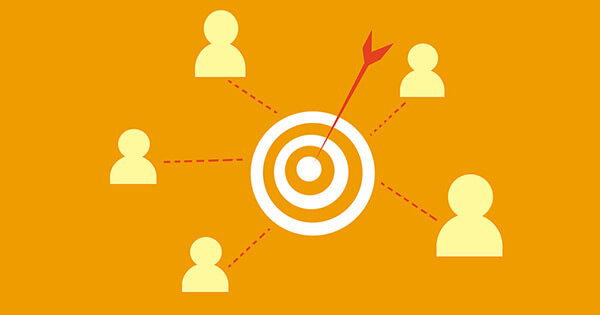As B2B marketers, we are always hunting for ways to improve our marketing and, ultimately, sales success. Whether it be exploring new channels or improving content, finding ways to reach your target audience can be a struggle.
One tried and true way to find new leads, learn more about your prospects and customers and be at the forefront of thought leadership is by utilising surveys. However, if surveys are new to your marketing programme, they may seem like a bit of a challenge. So how can you use surveys to improve your marketing and sales? What are the steps you should take to create an effective survey and obtain the information you’re looking for? The following will give you some basic steps to follow to improve your survey’s success.
Why you should use surveys
In B2B marketing and sales the more data you have about your prospects the better. Data about who you are targeting enables you generate more leads, be seen as a thought leader within your industry, and help sales and marketing to customise their content and approach better with more personalised messaging.
Lead generation
When it comes to researching prior to making a purchase, 51% of B2B buyers are now looking to content to help with the decision making process. Added to that, 94% of those of B2B buyers also thought that content could be improved by using more data and research to support the content.

A well structured survey can supply you with the up-to-date data you need to create stellar, lead-generating content such as white papers, webinars, infographics or blog posts. Whether this content is available on your website or published through other industry sources it can lead potential clients in your direction. By using Google’s Keyword Planner, you can also make sure you are noticed in a search.
Thought leadership
A study conducted by LinkedIn and Edelman found that 63% of B2B decision makers felt that “reading thought leadership is one of the best ways to get a sense of what type and caliber of thinking an organisation is likely to deliver.” The same study shows that 53% of business decision makers and 55% of C-suite executives value thought leadership.
Publishing content based on studies and analysis sets your organisation up as a thought leader. However, it’s wise to note that not every piece of research will earn your organisation the respect and recognition as thought leaders. A survey of 200 senior executives at FTSE 350 organisations found that, thought leadership fails when it is too generic, lacks original insight or promotes the advisor while failing to address client needs. So, it’s important to create thought leadership material that is engaging and relevant to your target audience.
Strengthen sales and marketing message
The information you obtain from a survey gives you a good idea about your target industry but also about your customers and prospects. You can learn about what their goals are, what pains they going through and where they are within the buying cycle.
Your marketing and sales messaging or talking points can be customised to address the goals and show how your product or service can alleviate the pains. Having an idea of your prospects’ mindset at various stages of they purchase cycle also allow helps you send the most appropriate messaging at the right time.
Here are the steps to follow if you are ready to setup your own survey:
Step 1: Have a good idea of your customers and prospects
Before you start thinking about which questions to ask on your survey, have a good look at who your customers and prospects are. Study your customer personas. Really get to know your customers and prospects and what their goals and pains are. By knowing what your target audience needs and objectives you can
Step 2: Have a good idea of how your product and service can help
Know your products and services. Be aware of your product features and benefits, especially which features and benefits set your company apart from your competitors. Also have a good idea of the capabilities your product enable. Being armed with this information will help inform your survey questions and how you ask them.
Step 3: Map the buyer’s journey and figure out customer information needs

Part of knowing your customers is being able to predict what their needs are and where they are within the buyer’s journey. Once you’ve discovered these points you can proceed with the following actual survey process.
Come out with some hypotheses around these needs that helps sell your solution
You’ve already taken the time to get to know your target audience as well as your product or service and how they can benefit your prospects and customers. Now it’s time to make a few hypotheses based on the needs of your targets. Make sure to form your hypotheses in a way that will help you sell your product or service. Remember that while you are wanting to collect data and find out more about your customers, your goal is use this data for your marketing and sales efforts.
Create questions to test these hypotheses
Now it’s time to start forming a list of questions. Formulate these questions in a way that will test your hypotheses. Of course, you’ll want to make sure to do the appropriate housekeeping question so you have the vital statistics/demographics about your participant pool.

Another thing to consider when formulating your questions is the types of questions to ask. Utilise the various types of questions available to you (multiple choice, closed-ended, rating scales, ranking order, etc.) which will give you the depth of data you need as well as keep the participants from getting fatigued by answering the same question type repeatedly.
Run your survey and collect the data
Once your survey is ready. Get the word out for your focus audience to participate. Run the survey for about 10 days to two weeks to give your participants plenty of time to take the survey. It’s advisable that you send out a reminder email a couple days prior to the survey ending to nudge anyone who has not had the opportunity to take the survey.
Write up the results to argue your case
Now you have the data it’s time to analyse it and make your case in a report. What should companies be doing differently? Tie your recommendations to your product but do not be too blatant about it. It’s important to tie into your product loosely since survey-based reports are generally top-of-funnel content.

Reuse and revisit the data throughout your entire marketing calendar
Don’t just use this data once and let it go to waste. Reuse and repurpose the data throughout the years. Make the most of what you have gathered through blog posts, webinars, white papers and social media posts. This will keep you ahead in thought leadership and justify the expense incurred with the initial survey.

